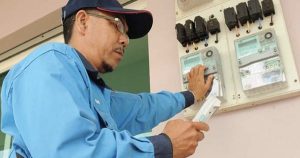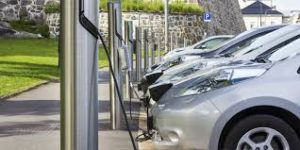
Introduction
Every month, a meter reader, wearing light blue shirt, will be entering our house compound to read the electricity meter at our house. Then, he will drop the electric bill into our mailbox. This October’s bill reads RM294.
We dream of a day that we will receive a cheque from the meter reader instead of the monthly electricity bill. That day will be coming soon. On October 23rd, 2018, it was reported that an electric car Nissan Leaf, manufactured by Nissan, became the first electric vehicle (EV) to secure regulatory approval as an energy backstop for Germany’s electricity grid.
So-called vehicle-to-grid (V2G) technology is a connection between the EV and the electricity grid through which power (electricity) can flow from the grid to the vehicle and vice versa. That potentially enables car owners to sell electricity to the electricity network supplier. In addition, electricity network supplier companies could use EVs as a backstop if electricity demand rises.
The International Energy Agency estimates that there would be 280 million EVs by 2040 compared with more than 3 million in 2017.

Nissan is relying on the CHAdeMO charging standard, which had been jointly developed by several Japanese companies as a competitor to Tesla’s supercharger system and the European-backed combined charging system (CCS). That places Nissan at odds with European carmakers such as BMW and Volkswagen, which are promoting to have the CCS, which is capable of V2G services.
Nissan is ahead of its other competing technologies although Tesla’s supercharger can theoretically offer V2G services according to an industry expert.
Nissan has so far sold about 370,000 EVs and, along with top shareholder Renault, has been very active in exploring how car batteries can be integrated into the electricity supply system.
How Does V2G Technology Benefit Us?
According to ovoenergy.com, we are moving towards a situation where “two-way” chargers can enable homeowners with EVs to sell their power (electricity) back to the electricity network. It is a smart idea when over 90 per cent of cars are parked at any one time—which is a lot of energy just sitting there doing nothing.
Battery Degradation

Batteries have a finite number of charging cycles, as well as a shelf-life. Therefore, using an EV as grid storage can impact battery longevity. However, studies have shown that battery capacity is a complex function of factors, such as battery chemistry, charging and discharging rate, temperature, state of charge and age.
Most studies with slower discharge rates show only a few per cent of additional degradation.
Conclusion
We believe, with rapid progress in EV and V2G technology, our wish to have the meter reader drops a cheque into my mailbox for supplying power to the national electricity grid would be realized soon. First, we need to book a Nissan Leaf from our local Nissan dealer.